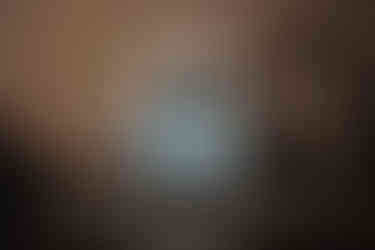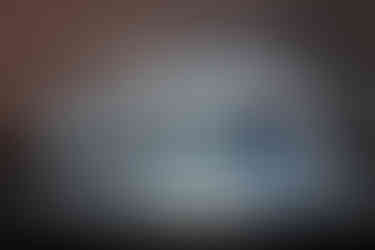How to Make an Ophthalmology Suturing Dry Lab at Home
- Atanas Bogoev M.D.
- Apr 3, 2024
- 4 min read
Updated: Aug 3, 2025
In any surgical specialty, especially ophthalmology, mastering suturing techniques is an essential skill. However, finding opportunities to practice these skills outside clinical settings can be challenging. That's where the concept of a "dry lab" comes in handy - a space where anyone can work on their suturing skills in a controlled environment. But how about setting up a suturing dry lab at home?
My name is Atanas Bogoev, MD and I am an ophthalmology specialist, passionate about surgery, teaching, and education. I have had the chance to attend many, many (maybe even too many) dry labs all over the world. In this guide, I'll walk you through the steps to setting up your own ophthalmology suturing dry lab at home.
Ophthalmology Suturing Dry Lab at Home: Step-by-Step
Step 1: Gather Materials

The first step is to gather all the necessary materials. You'll need:
Artificial skin model: Look for a realistic artificial eyeball model, preferably one that mimics the texture and resilience of human tissue. Check out those options:
Skin model (Amazon)
Skin model (AliExpress)
Suture materials: Purchase a variety of sutures commonly used in ophthalmic surgeries, 6-0 silk, and 6-0 Vicryl.
Surgical sutures for practice (Amazon) - this set offers a diverse materials suture set from 2-0 to 5-0
Surgical sutures for practice (AliExpress) - you can choose from 2-0 to 4-0 Silk
Idealy in ophthalmology we usually suture with 5-0, 6-0 and thinner sutures (for example 10-0 for cornea). While practicing with 2-0 in the beginig is okay, longterm you want to get used to working with thinner sutures and smaller needles.
Suture scissors: Invest in a pair of high-quality suture scissors with fine, sharp tips for precise cutting.
Wescott Scissors 12 cm (Ali Express)
Forceps: Get a pair of fine-tipped forceps to assist with grasping and manipulating the sutures.
Titanium Surgical Needleholder Curved 12.5 cm (AliExpress)
Surgical Needleholder straight 14 cm (Amazon)
When buying a Needleholder for practice I recoomend that you get a smaller bent needle holder, without grippping teeth and non-locking.
Tying Forceps: Ideally, in ophthalmology, you want to practice tying with instruments instead of with your hands.
Tying forceps straight (AliExpress)
Look for compact straight forceps with wide square grip, withouth teeth.
Surgical Gloves: Ensure you have a supply of surgical gloves to perfect your technique with the feeling of wearing gloves during practice sessions.
Lighting: Set up adequate lighting in your workspace to simulate the conditions of an operating room.
Ring light desk setup (Amazon)
Ring light deck setup (AliExpress)
Should you get a combined set?
While getting a combined set is easier and saves time, I would not recommend it as it is more targeted towards medical students and general surgeons.
As ophthalmologists, we work with finer instruments and sutures. Maybe we will do a special set tailored to ophthalmologists and will post the link here in the future. (Let us know if you think this is a good idea)
Step 2: Set Up Your Workspace
You need a well-lit and comfortable area in your home where you can set up your dry lab.
Your desk is a great option, as you can quickly transform it back and forth. Organize it to create a dedicated workspace for practicing suturing techniques. Place your artificial skin model on a stable surface for optimal practice conditions.
In my ophthalmology suturing dry lab setup, I'm using an LED ring light and a clamp mount magic arm.
Step 3: Practice Basic Suturing Techniques
Begin by researching and making yourself familiar with basic suturing techniques. Must-check suturing courses:
Cornea suture course - Mayo Clinic
Suturing live video by Dr. Lorenz Kuske - Learn about Eyes
Doctor Eyeball MD's Instructional Ophthalmology Suturing Video - YouTube
Ophthalmic suturing 101- Article by Jason D Rupp, MD, AAO
Learn how to suture - Dr. Michael Zenn, Duke University

Time to start practicing on your ophthalmology suturing dry lab!
Once you feel ready, start practicing with simple interrupted sutures, continuous sutures, and mattress sutures on the artificial skin model.
Focus on good posture, coordination, and consistency. Ensure you do not lose suture tension and aim for optimal needle placement.
Step 4: Experiment with Different Suture Materials
Try practicing with different types and sizes of sutures used in ophthalmic surgeries. Pay attention to the characteristics of each suture type and adjust your technique accordingly.
Once you get comfortable, progress to finer and thinner sutures.
Surgical sutures for practice (Amazon) - The set includes variable non-absorbable suture materials: Nylon, Polyester, Polypropylene, and Silk, so you can get a feeling for how different materials interact with tissue and how they are handled.
You can use non-sterile sutures from your hospital or ones that are past their due date.
Step 5: Seek Feedback and Improvement
Don't hesitate to seek mentorship from experienced colleagues or attendees on your suturing technique. Their feedback can provide you with important insights and tips for improvement.
I highly recommend that you record your practice sessions (and later on your surgeries), and spend the time to review your technique to identify areas for refinement.
I remember after watching a recording of one of my first dry lab practice sessions, I noticed that I did so many unnecessary movements, I had bad posture and my hand position was suboptimal. I was focused on improving on my next session.
Step 6: Practice Regularly
"It takes 10,000 hours of intensive practice to achieve mastery of complex skills and materials" - Malcolm Gladwel
Discipline and consistency are crucial to mastering suturing skills.
Try to incorporate regular practice sessions into your study routine, even if it's just for a few minutes each week. As you build mind-muscle connections, create muscle memory, and refine your fine movements, you'll notice a steady improvement in your suturing abilities.
Take your time and be patient, you will get there.
Final thoughts...
Setting up an ophthalmology suturing dry lab at home is a sure way to take your suturing skills to the next level outside clinical settings.
You are already on your way to becoming a great ophthalmic surgeon! Following these steps and committing yourself to regular practice, will help you prepare yourself for success in your career.
Now enough talking, let's start suturing!

Disclosure: This webpage contains affiliate links, which help support us and keep the website running. The recommendations are genuine and are NOT sponsored. Explore other options yourself, and if you find something better, let us know so we can include it.








